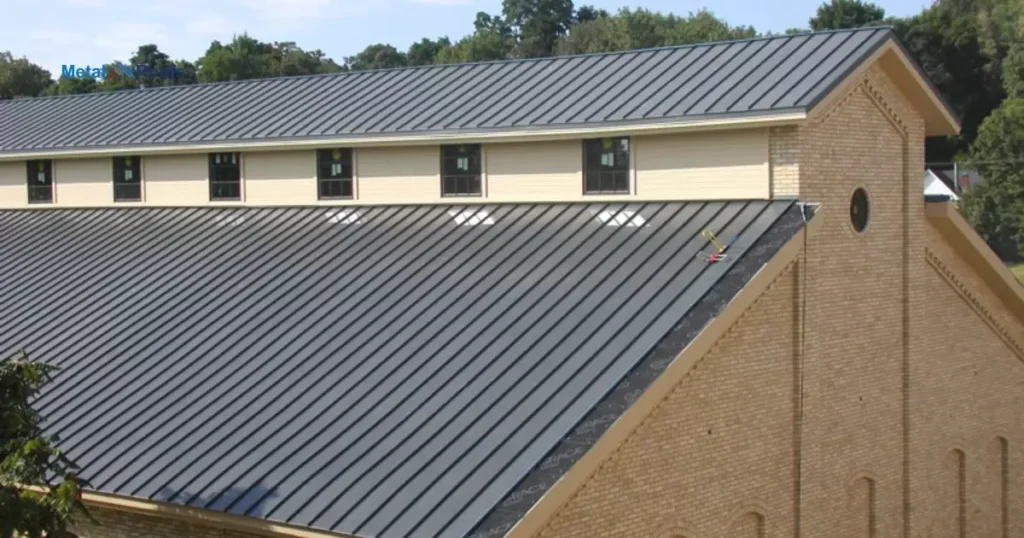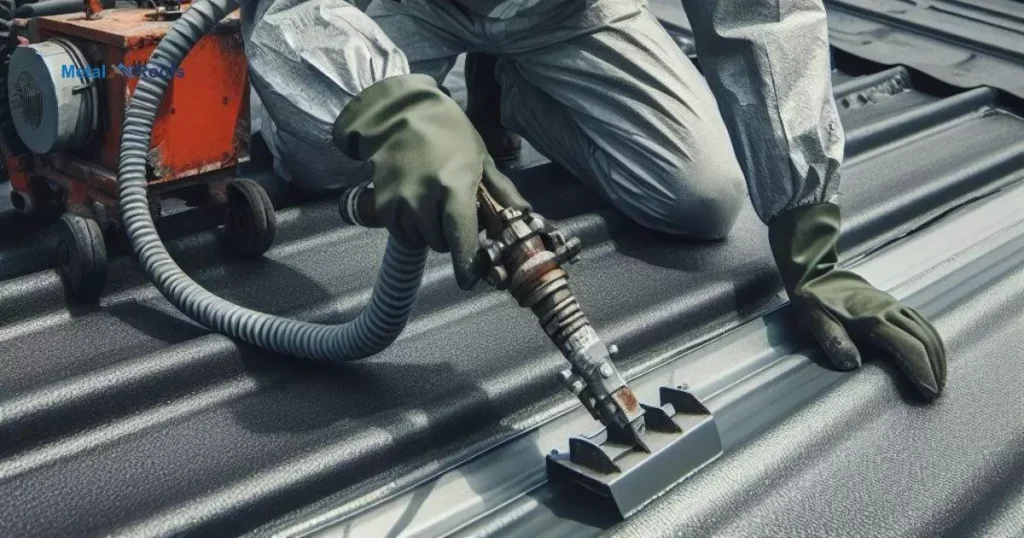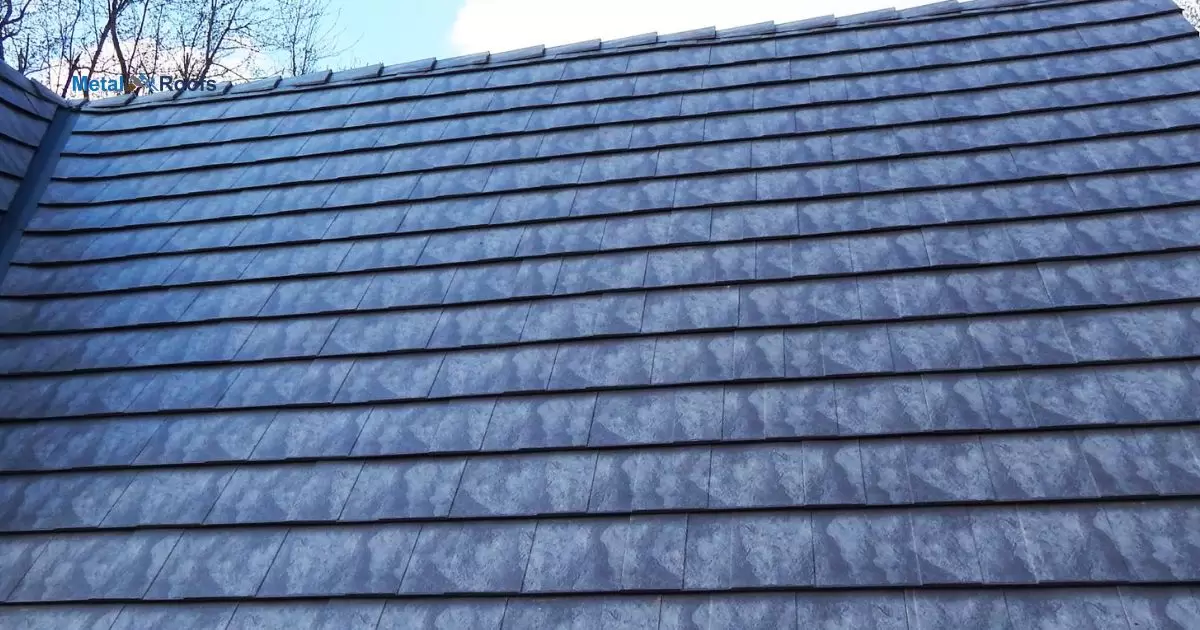Metal roofs can fade over time due to exposure to sunlight, moisture, and other environmental factors. The fading can affect the color and appearance of the metal roof, leading to a duller or discolored look. Proper maintenance and coatings can help prevent or minimize fading.
Do metal roofs fade? Yes, they can. sun, rain, and elements take a toll. colors dull and change over years. but you can slow fading. Proper coatings and care make a difference. location and material type also matter. overall, expect some fading, but it’s manageable.
Fading happens gradually. Some metals fade faster than others. galvanized steel changes quicker. aluminum and copper age gracefully. proper installation and ventilation help. Regular cleaning removes buildup. The right coating system prevents discoloration.
Key Takeaways
- Metal roofs can fade over time due to sunlight, weather, and type of metal.
- Factors like UV exposure and quality of coating influence fading.
- Regular maintenance can slow down fading.
- Despite fading, metal roofs remain durable compared to other materials.
What is Metal Roof Fading?
Metal roof fading happens when the roof’s color diminishes over time. It occurs due to sunlight, weather, and the type of metal used. Factors like UV exposure and coating quality influence how fast fading occurs. Regular cleaning slows down fading, ensuring the roof looks good longer.
Despite fading, metal roofs remain durable compared to other materials. Their resistance to fading varies with the type of metal and protective coating. Maintenance plays a crucial role in preserving the roof’s appearance, including addressing screw holes in metal roofs. With proper care, a metal roof can maintain its color and integrity for many years.
Factors Contributing to Metal Roof Fading

| Factors | Description |
| Exposure to Sunlight and UV Radiation | Direct sunlight and UV rays can accelerate fading of metal roofs. |
| Weather Conditions | Harsh weather like heavy rain and extreme heat can contribute to fading. |
Metal roofs can fade due to several factors. Direct sunlight exposure, especially in regions with intense UV radiation, accelerates fading. Harsh weather conditions, like extreme heat and heavy rain, also contribute to the fading process.
The type of metal used and the quality of coating applied are crucial. Regular cleaning and maintenance help slow down fading by preventing dirt buildup. Despite fading, metal roofs remain durable compared to other materials.
Types of Metal Roofs and Their Fading Tendencies
Metal roofs are known for their durability and longevity, but they can still experience fading over time due to exposure to sunlight, weather elements, and other environmental factors.
The fading tendency can vary depending on the type of metal used for the roof. Here are some common types of metal roofs and their fading tendencies:
Galvanized Steel: Galvanized steel roofs are coated with a layer of zinc to protect against corrosion. However, over time, the zinc coating can degrade and lead to fading of the roof’s color.
The fading tendency of galvanized steel roofs can be moderate to high, depending on the quality of the coating and the level of exposure to sunlight.
Aluminum: Aluminum roofs are lightweight and resistant to corrosion, making them popular choices for coastal areas or regions with high humidity.
Aluminum roofs typically have a protective coating that helps prevent fading, but prolonged exposure to sunlight can still cause some degree of fading over time. Aluminum roofs generally have a lower fading tendency compared to other metals like galvanized steel.
Copper: Copper roofs are highly durable and develop a natural patina over time, which can give them an attractive aged appearance.
While copper roofs do not typically fade in the same way as painted or coated metal roofs, they can change color gradually as they develop patina. This change in color is often desired by homeowners seeking a rustic or weathered look for their roofs.
Zinc: Zinc roofs are known for their longevity and self-healing properties, as they develop a protective layer of zinc carbonate over time. This natural patina helps protect the roof from corrosion and can also give it a distinct appearance.
While zinc roofs may experience some initial fading as the patina develops, they generally have a low fading tendency in the long term.
Painted or Coated Metal: Many metal roofs are coated with paint or other protective coatings to enhance their appearance and durability.
The fading tendency of painted or coated metal roofs can vary depending on factors such as the quality of the coating, the color chosen, and the level of exposure to sunlight. Lighter colors tend to fade less than darker colors, as they reflect more sunlight and heat.
Overall, while all metal roofs may experience some degree of fading over time, the extent of fading can vary depending on the type of metal used and the specific environmental conditions.
Regular maintenance and proper care can help prolong the life and appearance of a metal roof, regardless of its fading tendency.
The Role of Paint Coatings and Finishes?
These coatings shield the surface from sunlight and harsh weather conditions. They act as a barrier against UV rays, preventing colors from dulling over time. High-quality coatings provide extra durability, prolonging the lifespan of the roof.
The type and quality of the coating directly influence how well the roof resists fading. Regular maintenance, such as cleaning off debris and dirt, also helps maintain the roof’s appearance. Despite potential fading, metal roofs remain durable and long-lasting with proper care and the right coatings.
Climate and Weather Conditions
Climate and weather greatly affect the longevity of metal roofs. Direct sunlight speeds up fading, especially in regions with intense UV radiation. Harsh weather conditions, like heavy rains and extreme heat, also contribute to fading.
Regular maintenance can mitigate these effects. Keeping the roof clean from dirt and debris helps prevent discoloration. Despite potential fading, metal roofs remain durable compared to other roofing materials, ensuring long-term protection for your home.
Proper Installation and Maintenance
Proper installation of a metal roof is crucial for its long-term performance. Ensure that the roofing panels are securely fastened and sealed to prevent leaks. Regular maintenance, such as cleaning debris and checking for damage, helps prolong the roof’s lifespan.
Inspect flashing and seals annually to maintain weatherproofing. Regular maintenance is essential for preserving the appearance and functionality of a metal roof. Clean the roof surface to remove dirt and debris, which can cause discoloration.
Inspect for loose screws or damaged panels, repairing them promptly to prevent further issues. By staying proactive with maintenance, you can ensure your metal roof remains durable and attractive for years to come.
Prevention of Metal Roof Fading
To prevent metal roof fading, choose high-quality coatings with UV protection. These coatings shield the metal from sunlight, slowing down fading over time. Regular cleaning and maintenance are vital; removing dirt and debris prevents discoloration.
Inspect your roof regularly for signs of damage; repair any scratches or chips promptly. Consider applying a fresh coat of protective coating every few years to maintain its appearance. By taking these preventive measures, you can prolong the lifespan of your metal roof and keep it looking vibrant for years to come.
Metal Roof Fading Other Roofing Materials
Metal roofs can fade over time due to factors like sunlight and weather. UV exposure and the quality of the coating affect how quickly fading occurs. Regular cleaning can help slow down the fading process. Despite fading, metal roofs are still durable compared to other roofing materials.
In contrast, some roofing materials like asphalt shingles may also fade over time. However, they tend to fade more rapidly than metal roofs. Weather conditions and UV exposure can cause fading in asphalt shingles. Unlike metal roofs, asphalt shingles may require more frequent replacement due to fading and other wear.
Signs of Metal Roof Fading
Metal roofs, over time, exhibit signs of fading. The first indicator is the diminishing vibrancy of colors, notably in regions receiving intense sunlight. Weather, including heavy rains and exposure to pollutants, accelerates this process. Despite the fading, metal roofs remain durable, requiring regular maintenance.
Regular cleaning helps slow down fading by preventing dirt buildup. The quality of the coating and metal type influence the rate of fading. Despite these factors, metal roofs generally outlast other roofing materials, maintaining their durability even as they fade.
Addressing Faded Metal Roofs
Metal roofs may fade over time, but addressing this issue is manageable. Regular cleaning and maintenance play a crucial role in slowing down the fading process. Removing dirt and debris prevents discoloration and preserves the roof’s appearance.
Choosing high-quality coatings with UV protection enhances durability and color retention, extending the roof’s lifespan. Despite fading, metal roofs remain resilient compared to other roofing materials. With proper care, they can maintain their integrity and aesthetic appeal for years to come.
Impact of Faded Metal Roofs
Faded metal roofs can affect a building’s appearance, making it look worn and less attractive. When colors fade, the roof loses its vibrancy, which can detract from the overall curb appeal.
Sunlight and weather contribute to this fading process, gradually diminishing the roof’s aesthetic appeal over time. The impact of faded metal roofs extends beyond aesthetics. As the protective coating deteriorates, the metal becomes more susceptible to corrosion and damage.
This can compromise the roof’s integrity, leading to leaks and structural issues. Regular maintenance is crucial to mitigate these effects, preserving both the appearance and functionality of the metal roof for years to come.
Metal Roof Replacement Refinishing

When considering metal roof replacement, refinishing is a vital aspect. Over time, metal roofs can fade due to sunlight and weather conditions. Regular maintenance helps slow down fading and preserves the roof’s durability.
Despite fading, metal roofs remain durable compared to other materials. Keeping them clean and well-maintained can extend their lifespan and keep them looking good for years to come. Metal roof replacement with refinishing ensures longevity and retains the roof’s aesthetic appeal.
Frequently Asked Questions
Which metal roof fades the least?
Aluminum and copper roofs fade the least, retaining their color and vibrancy over time with minimal maintenance.
How long does metal last on a roof?
Metal roofs last for decades, typically 50 years or more for aluminum and steel, and over 100 years for copper. Maintenance, climate, and installation quality affect lifespan.
How do you restore a faded metal roof?
To restore a faded metal roof, clean it well, apply a metal roof restorer or paint, following instructions. Allow drying time between coats. Regular maintenance helps preserve the restored look.
Conclusion
Metal roofs do fade over time, but the extent varies. Proper installation, maintenance, and coatings can minimize fading. Choosing the right metal type and color can also help. With care, a metal roof can retain its look for years.
Ultimately, some fading is natural and unavoidable with metal roofs. It’s a gradual process that can be managed. Regular cleaning recoating and repairs can extend your roof’s vibrant appearance. Embrace the natural aging process for a unique patina.











